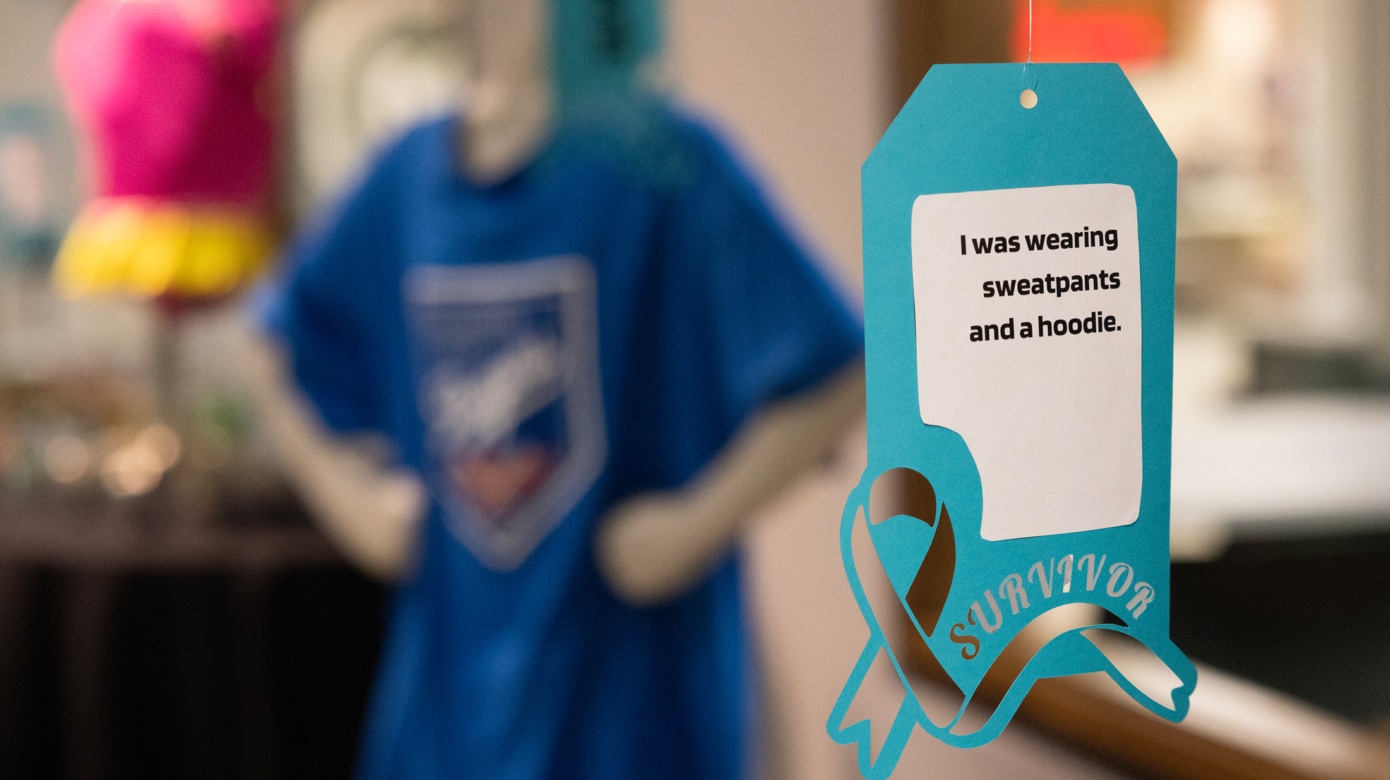As an essential part of everyday life, clothing has many purposes, but it is used primarily as protection from the elements. Yet, when it comes to sexual violence, victims often hear that their clothing did not protect them but ultimately caused the assault.
Victims get asked, “What were you wearing?” or “What did you expect was going to happen?” — examples of victim-blaming, which is a common but problematic response to disclosures of assault. Citizen Potawatomi Nation’s House of Hope partnered with Oklahoma Baptist University to stage an exhibition during Sexual Assault Awareness Month titled What Were You Wearing? in an effort to change public perspective about this type of victim-blaming.
“We needed to plan an event to bring more awareness to the community because awareness equals prevention,” said Kayla Woody, HOH’s Domestic Violence Prevention Initiative prevention specialist.
The House of Hope worked with OBU’s Normalize.No sexual assault awareness group to gather survivor submissions from around the greater Shawnee, Oklahoma, community that described what they were wearing during the assault. Both organizations then put together clothing donated by Cinderella’s Consignment of Shawnee and displayed the outfits on mannequins, recreating the submissions. Woody said these types of visualizations “grab your attention.”
“I feel like this is a really good way to visualize what’s going on with sexual violence because this is a taboo topic, and sexual violence is something that is hard to take in. This is a safe way to really express what’s happening, and I feel (it’s) a safe way for survivors to use their voice because speaking out when you’ve experienced something like sexual violence is such a healing thing,” she said.
HOH placed the exhibit inside the university’s Geiger Center along a hallway many students and community members pass through while grabbing food or making their way to a class or meeting. The purpose was to dispel sexual assault stereotypes.
“Clothing has nothing to do with the violence that they’re experiencing,” Woody said. “There’s never an excuse for that. And I think what’s just so impactful from the submissions that we received from survivors in the area, most of the stories, the clothing is just everyday clothing.”
Nineteen survivors submitted short descriptions of the clothing they were wearing, each of which hung above the mannequin that displayed their outfit. The majority of survivors described wearing T-shirts and jeans or sweatpants and hoodies. Woody’s mother, Brenda Kelly, felt compelled by its message.
“I think that this entire exhibition makes a huge statement. When you walk in the room without knowing what it is, it might seem insignificant, but when you stop to read the cards above each outfit, it will bring you to tears. I hope this message gets out to all the right people,” she said.
Submissions stated some were as young as 4 years old, wearing a children’s tank top swim set with pink and yellow flowers.
“They were minors when they were first assaulted, and some have experienced ongoing assault that they mentioned,” said Project Safe Executive Director Renee Clemmons. “That’s just heartbreaking, and it’s so sobering. The other thing that strikes me is that it doesn’t matter what you’re wearing. Sexual assault is not about what’s on the outside, the clothing. It’s about power and control. And somebody’s taking advantage of someone else.”
University students and the community viewed the exhibit and also had the opportunity to leave anonymous comments, encouragement, stories and feelings pinned to a sharing board for everyone to see. Messages like, “I believe you,” “It’s not your fault,” and “It gets better. I promise,” served as points of hope as part of an exhibit addressing a difficult subject.
“You have to take every day and just take self-care and remember that there’s a positive side of this and there’s a reason why we’re doing this — to really bring healing to those who have experienced it but also to stop it from happening,” Woody said.
If you or someone you know is experiencing stalking, intimate partner violence, and/or sexual assault and would like more information, please contact the House of Hope at 405-275-3176 or visit online at facebook.com/cpnhouseofhope.
This article was written with assistance from Kayla Woody, CPN House of Hope DVPI Prevention Specialist.

